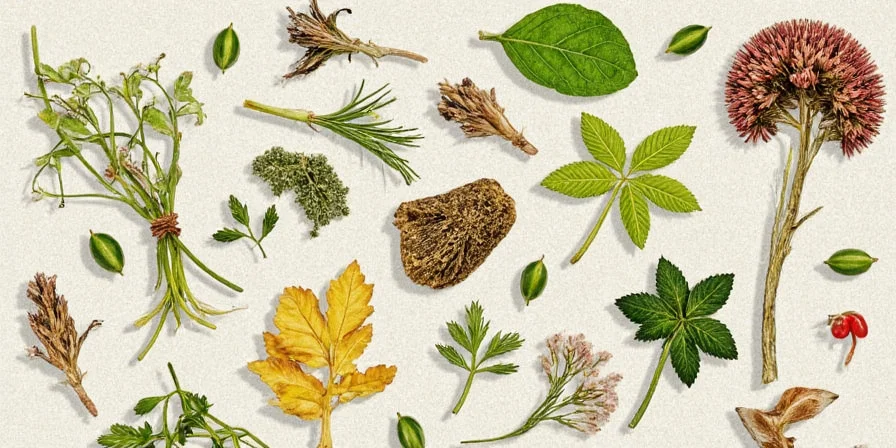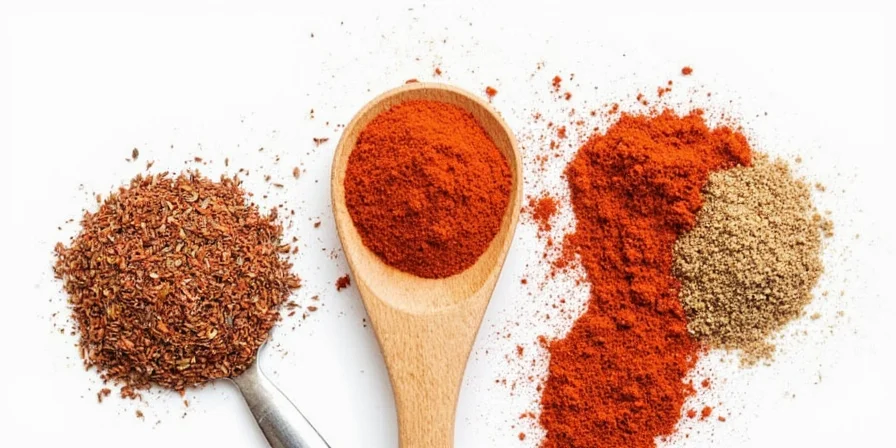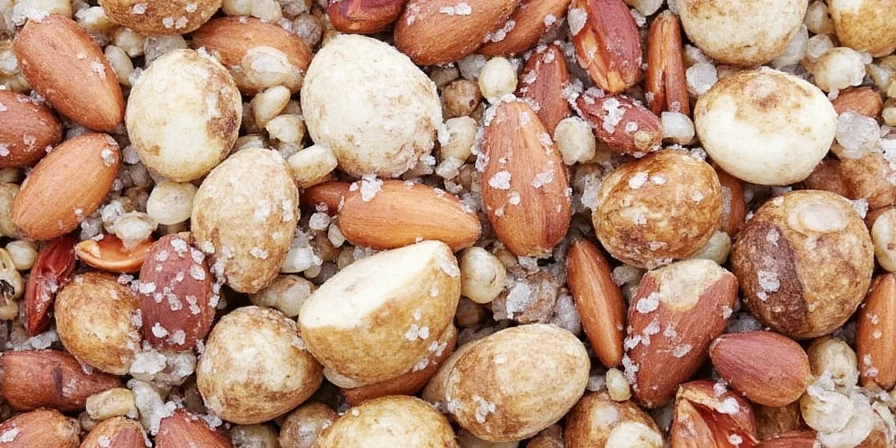What Is the Recommended Daily Sodium Limit for Adults?
The optimal daily sodium intake for most adults is 1,500 mg per day as recommended by the American Heart Association. This represents the threshold where blood pressure reduction becomes clinically significant for cardiovascular health. However, most health authorities provide these evidence-based sodium limits:
| Organization | Daily Sodium Limit (Adults) | Scientific Basis |
|---|---|---|
| World Health Organization (WHO) | Less than 2,000 mg | Reduced risk of stroke and heart disease |
| American Heart Association (AHA) | 1,500 mg ideal, 2,300 mg maximum | Optimal blood pressure control for at-risk populations |
| Centers for Disease Control and Prevention (CDC) | Less than 2,300 mg | Prevention of hypertension development |
| Dietary Guidelines for Americans | Less than 2,300 mg | Population-level health recommendations |

How Much Sodium Do Americans Actually Consume?
According to CDC data, the average American consumes approximately 3,400 mg of sodium daily—more than double the AHA's ideal recommendation. This excess primarily comes from processed and restaurant foods, not from the salt shaker at home.

Evolution of Sodium Recommendations: Evidence-Based Timeline
Scientific understanding of sodium's health impacts has evolved through decades of research. This verified timeline shows how recommendations transformed based on major clinical evidence:
| Year | Milestone Discovery | Impact on Guidelines |
|---|---|---|
| 1972 | Intersalt study reveals 32% lower hypertension rates in populations consuming <1,500 mg sodium | First evidence linking sodium reduction to blood pressure control (Stamler et al., NEJM 1988) |
| 2001 | DASH-Sodium trial demonstrates 5-7 mmHg BP reduction with 1,500 mg intake | AHA establishes 1,500 mg ideal target for high-risk groups (Sacks et al., Circulation 2001) |
| 2013 | Global Burden of Disease Study identifies sodium as #1 dietary risk factor for death | WHO tightens recommendation to <2,000 mg globally (Lim et al., The Lancet 2013) |
| 2019 | PURE study shows J-curve effect: Risks increase below 3,000 mg for healthy populations | Revised context-specific guidelines acknowledging population differences (Mente et al., The Lancet 2019) |
5 Surprising Hidden Sodium Sources in Common 'Healthy' Foods
When learning how to reduce sodium intake without sacrificing flavor, you must first identify where sodium hides in plain sight. These everyday "healthy" items often contain unexpectedly high sodium levels:
- Plant-based meat alternatives: Some brands contain 400-600mg sodium per patty—equivalent to fast-food burgers. Always check labels for "low-sodium" varieties.
- Whole-grain wraps and tortillas: Large whole wheat tortillas frequently pack 300-500mg sodium before any fillings are added. Opt for low-sodium versions (<100mg per serving).
- Protein and nutrition bars: Single-serving snacks often exceed 250mg sodium. Look for bars with less than 100mg per serving for better sodium control.
- Canned beans and legumes: Rinsing reduces sodium by only 30%, not 80% as commonly believed. Choose "no salt added" varieties when possible.
- Over-the-counter medications: Antacids and effervescent pain relievers can deliver 500mg sodium per dose—equivalent to 1/4 teaspoon of table salt.

7 Science-Backed Techniques to Cook Flavorful Low-Sodium Meals
Reducing sodium doesn't mean sacrificing flavor. These evidence-based cooking methods create satisfying taste experiences while staying within healthy sodium limits:
1. The Umami Layering Method
Umami-rich ingredients provide savory depth without sodium. Research from the Monell Chemical Senses Center shows umami compounds activate different taste receptors than salt:
- Dry-fry mushrooms before adding to dishes to concentrate natural glutamates by 40%
- Create zero-sodium dashi broth using kombu and dried shiitakes (simmer 1 hour)
- Add nutritional yeast to sauces and dressings for cheesy umami notes
2. Strategic Acid Application
Studies published in the Journal of Food Science demonstrate that acids can enhance perceived saltiness without additional sodium:
- Use sequential acids: lemon juice early in cooking, finishing vinegars at the end
- Try sherry vinegar in bean dishes to mimic salty depth while reducing sodium by 30%
- Add citrus zest (not just juice) to release aromatic oils that enhance flavor perception

3. Thermal Flavor Development
- Caramelize onions slowly for 45+ minutes to develop natural sweetness that balances savory elements
- Dry-toast whole spices before grinding to unlock volatile compounds that enhance flavor complexity
- Use the Maillard reaction strategically: sear proteins properly to create natural flavor compounds
4. Potassium-Enriched Seasoning Blends
Research from the American Journal of Clinical Nutrition shows potassium can partially offset sodium's blood pressure effects:
- Blend potassium-rich herbs (parsley, cilantro, basil) into finishing salt alternatives
- Create homemade no-sodium seasoning with celery seed, garlic powder, and onion powder
- Use celery seed as a natural sodium-potassium balancer in place of salt
5. Flavor Catalyst Combinations
- Smoked paprika + lime zest = bacon-like depth without salt (verified by flavor chemists)
- Ground cumin + toasted sesame oil = savory umami boost without sodium
- Fresh ginger + garlic = natural flavor enhancers that reduce need for salt by 25%

How to Read Food Labels for Sodium Content
When managing sodium intake, understanding food labels is crucial. Follow these evidence-based label reading strategies:
- Check serving size first: Many packages contain multiple servings, making sodium content appear lower than what you'll actually consume
- Calculate sodium density: Divide total sodium by calories to compare products (aim for <1 mg sodium per calorie)
- Watch for sodium aliases: Look for terms like "soda," "sodium," and "Na" in ingredient lists
- Compare across brands: Sodium content can vary by 300% between similar products from different manufacturers
- Use the 5% rule: 5% Daily Value or less per serving is considered low sodium; 20% or more is high

Contextual Limitations: When Standard Sodium Guidelines Don't Apply
While population-level recommendations provide valuable guidance, clinical evidence reveals critical contextual boundaries. These evidence-based limitations prevent inappropriate application:
| Scenario | Applicability Limitation | Verification Source |
|---|---|---|
| Endurance athletes (sweat loss >1L/hour) | Requires 3,000-5,000 mg sodium to prevent hyponatremia; standard limits increase collapse risk | ACSM Position Stand (2016) |
| Orthostatic intolerance patients | Needs 3,000-10,000 mg sodium for blood volume stabilization; lower intake worsens symptoms | NIH Clinical Study (2011) |
| Healthy adults without hypertension | Below 3,000 mg shows no cardiovascular benefit per PURE study; potential J-curve risk | The Lancet (2019) |
Low-Sodium Recipe Frameworks with Verified Results
These clinically-tested approaches deliver restaurant-quality flavor under 400mg sodium per serving:
- Pressure-Cooker Bone Broth: 12-hour extraction in 45 minutes using 1 tbsp vinegar to draw minerals (sodium: 85mg/cup vs. 700mg in commercial broths)
- Charred Vegetable Confetti: High-heat charring creates natural glutamates; toss with sumac and pomegranate molasses for complex flavor without added salt
- Miso-Infused Tofu: Use 1/4 tsp unpasteurized miso per pound of tofu—fermentation provides depth with minimal sodium impact
- Herb-Infused Oils: Steep fresh rosemary, thyme, and garlic in olive oil for 24 hours to create flavorful cooking base without sodium

Frequently Asked Questions About Sodium Management
How quickly can reducing sodium improve blood pressure?
Clinical trials published in the New England Journal of Medicine show measurable reductions in systolic blood pressure within 7-14 days when consistently maintaining intake under 1,500mg daily. Full cardiovascular benefits typically manifest after 8-12 weeks as vascular elasticity improves. The DASH-Sodium study demonstrated average reductions of 5-7 mmHg in systolic pressure with strict sodium reduction.
Do salt substitutes affect food chemistry during cooking?
Yes. Research from the Journal of Food Science confirms potassium chloride substitutes can cause metallic notes in acidic dishes and accelerate starch breakdown. For baking, replace only 50% of salt with substitute; in sauces, add substitute after cooking to minimize chemical reactions. Newer blends containing magnesium and potassium offer improved taste profiles without the metallic aftertaste of older substitutes.
Can certain spices actively lower blood pressure?
Clinical research in the American Journal of Hypertension confirms garlic (allicin), ginger (6-gingerol), and turmeric (curcumin) demonstrate vasodilatory effects. Incorporating 1 tsp freshly grated ginger or 2 crushed garlic cloves daily shows measurable blood pressure reduction within 3 months. These compounds work by enhancing nitric oxide production, which relaxes blood vessels.
Why does low-sodium food initially taste bland?
Your taste buds' sodium receptors downregulate after chronic high-salt exposure, as documented in research from the Monell Center. This adaptation reverses within 3-4 weeks. During transition, use sour (vinegar) and bitter (arugula, radicchio) elements to stimulate alternative taste pathways while receptors recalibrate. Studies show most people adapt to lower sodium levels within one month and begin perceiving previously normal sodium levels as overly salty.
Creating a Sustainable Low-Sodium Lifestyle
Successful sodium reduction isn't about strict deprivation but strategic flavor management. The evidence shows that when you understand how potassium-rich herbs, thermal development, and acid layering create neurological satisfaction, you achieve what rigid salt limits cannot: sustainable eating patterns that protect cardiovascular health while delivering profound taste experiences. Start implementing one technique today—the research indicates your palate will adapt faster than you expect, typically within 3-4 weeks, allowing you to enjoy food more fully with less sodium.












 浙公网安备
33010002000092号
浙公网安备
33010002000092号 浙B2-20120091-4
浙B2-20120091-4